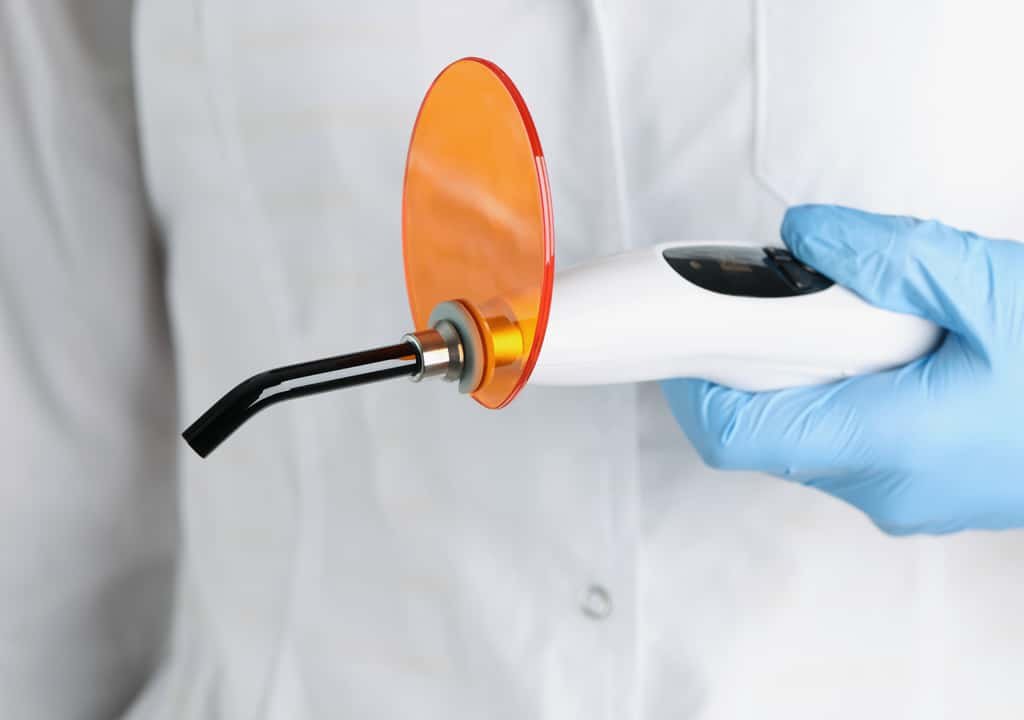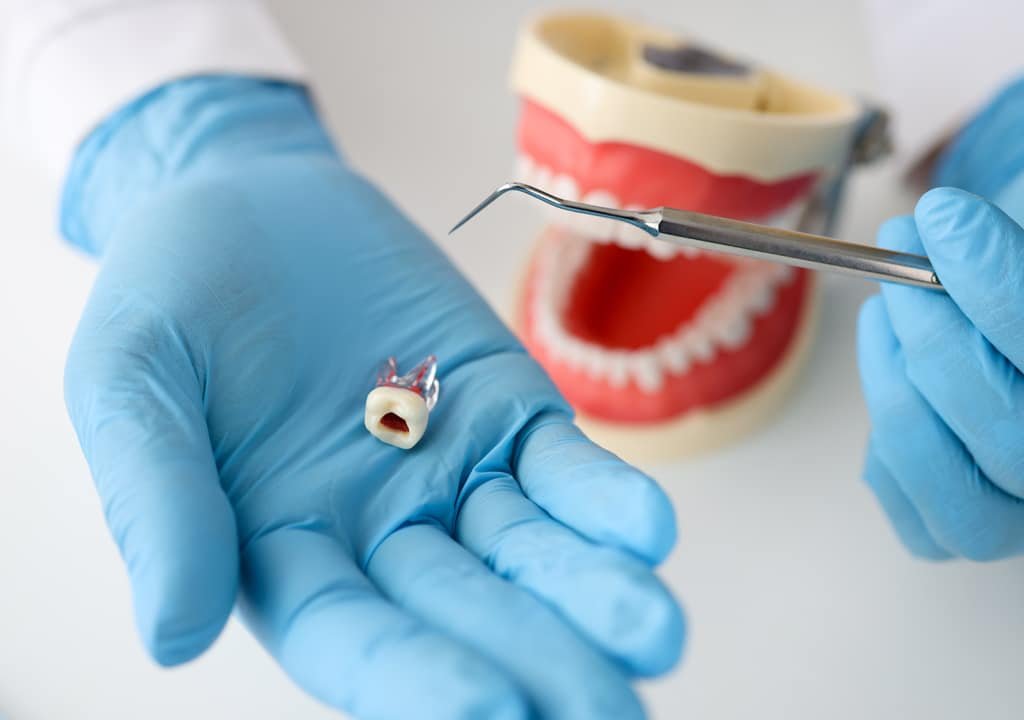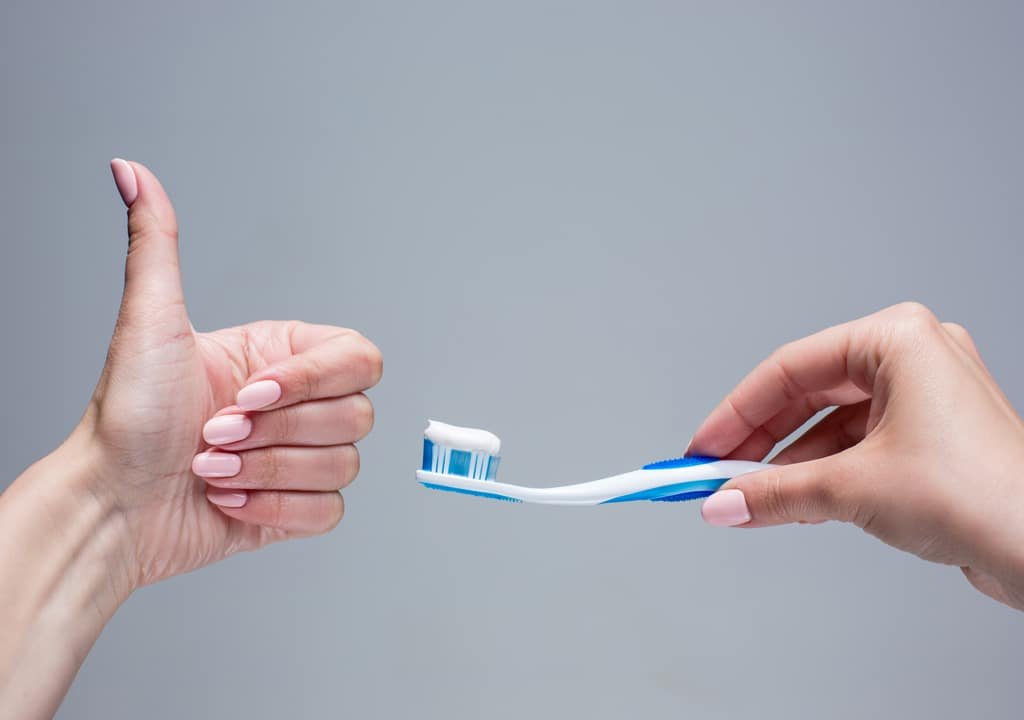Some of the best foods for healthy teeth are fresh fruits and veggies because of their high nutritional value and added teeth-cleaning benefits.
8 Signs You Need Emergency Dental Services
Emergencies can happen at any moment of the day. Staying prepared is wise, however, we never know when will we be called by one. So, here I have compiled 9 common signs that can help you know if you should visit your dentist now or if can it wait till tomorrow!
Sensitivity Of Teeth After Placing Composite Filling?
Blog
Tooth Sensitivity After Fillings? Here’s What to Expect
Introduction:
We have compiled this article on “Sensitivity Of Teeth After Placing Composite Filling?”. The reference links are at the bottom of the article.
[1]Sensitivity is characterized as being a response given by the body to say that something is wrong, and this response may be originated by an aggressive stimulus or in a spontaneous manner. The sensory potential of the pulp makes it capable of reaction with an immediate painful response, even when the stimulus is applied at a distance from the pulp tissue, such as in the superficial layers of dentin.
Innumerable restorative procedures are performed on a day-to-day basis in dental offices, and some stages of the procedure may generate stimuli that result in pain or potentiate already existing sensitivity. Therefore, it is important to know what a resin composite restoration is not: simply removing carious tissue and inserting restorative material in small increments. Instead, it comprises various steps that must be carefully performed so that the restoration will be successful; that is, a perfectly sealed restoration that restores the shape and function of the tooth, and is comfortable for the patient .
[2]Immediate reports of Postoperative sensitivity (POS) reported after restoring teeth with direct composite resin restoration is a baffling issue experienced by most dentists. At-least five to twenty six percent patients report POS immediately after composite resin restoration1. In the authors’ observation, sensitivity typically lasts’ for a period of few days to months and finally settling down to normalcy and in very extreme cases there is pulp involvement leading to endodontic therapy. Sensitivity is mostly elicited at the margins of the restorations and sometimes at the center of the restoration inspite of dealing with the occlusal interferences.
Composite resin based fillings are technique, instrument and material sensitive restorations as they mechanically and/ or chemically bond to the tooth structure. Composite resins are irritant to the pulp and should be bonded carefully along with additional use of liner, desensitizing agents and resin modified glass ionomers where necessary, especially in deep dentinal cavities so as to prevent postoperative sensitivity and subsequently pulp death; as total etch bonding systems may cause detrimental effects on the pulp.
Past studies have cited three most common reasons for postoperative sensitivity: polymerization shrinkage of the resin, microleakage around the margins of the restoration, and build-up of residual stress in the fabric of the tooth after placement of direct composite restoration.
At-least six percent of complaints of sensitivity after direct composite resin restorations on mastication and/ or sensation to cold and hot drinks can be attributed to increased cavity depth. This study hopes to look at some of the causes of postoperative sensitivity and plausible solutions and / or prevention to this obscure issue in order to enhance patient comfort and function after restoration of teeth with composite resin.
[3]Causes and Solutions for Post-Operative Sensitivity
Post-operative sensitivity from composite restorations is a complication most clinicians would like to avoid. Unfortunately, it happens a lot more often than most dentists and patients would like. Common causes exist for post-operative in composite restorations. Here are a few of them and how you can avoid them in your restorations.
Per Dental Update, post-operative sensitivity is more likely in complex restorative procedures, like those that require etching of enamel and dentine or that need acidic adhesive monomers. Moreover, the pain patients feel is caused by dentinal fluid movement stimulating the nerves in the tubules, which causes the mechanoreceptors near the dental pulp’s outer surface to react. The authors of the 2018 review article suggest that the remaining dentine thickness, the tubule diameters and the sealing of them, and the tooth’s overall pulp status may cause the sensitivity.
They also categorize the technique factors that contribute to post-operative sensitivity in the general areas of:
- Cavity preparation that damages dental tissues
- The type of adhesive system you use, self-etch vs. total-etch
- Not utilizing a desensitizer on the dentine surface
- Incomplete polymerization of the material because of curing
- The use of improper technique when placing materials into the cavity
Post-operative sensitivity occurs in up to 50% of composite restorations, per some studies, and is especially prevalent in posterior teeth and Class II restorations, but not limited to them. Post-operative sensitivity could have various causes. Per The International Research Journal of Dentistry (IRJD, post-operative sensitivity results from the interaction between:
- The clinician’s technique
- The health of the pulp and enamel
- The restorative material
Dentists can’t do anything about the tooth’s health (at this point, anyway) or the restorative materials’ makeup. However, clinicians can refine their technique, and this is where the most significant opportunity to prevent post-operative sensitivity lies.
Conclusion:
Thank you for reading this article, and check back frequently for other dental health articles. Should you have any questions, please contact Apple Tree Dental today!
Article compiled by Apple Tree Dental
Article reference links
-
https://www.researchgate.net/publication/235977564_Post-operative_sensitivity_on_direct_resin_composite_restorations_clinical_practice_guidelines ↑
-
https://biocoreopen.org/ijdoh/Immediate-Post-operative-Sensitivity-after-Composite-Resin-Restoration-A-Review-of-Treatment-Protocol.php ↑
-
https://www.dentalproductsreport.com/view/causes-and-solutions-for-post-operative-sensitivity ↑
Toothache Symptoms & Causes
Blog
What’s Causing Your Toothache? Symptoms & Treatment
Introduction:
We have compiled this article on “Toothache Symptoms & Causes”. The reference links are at the bottom of the article.
[1]What Is A Toothache?
A toothache is a pain in or around a tooth. Minor toothaches can come from a temporary gum irritation that you can treat at home. More serious toothaches are caused by dental and mouth problems that won’t get better on their own and will need to be treated by a dentist.
Why Is My Toothache So Painful?
The pulp inside your tooth is soft material filled with nerves, tissues and blood vessels. These pulp nerves are among the most sensitive in your body. When these nerves are irritated or infected by bacteria (abscess), they can cause severe pain.
What Are Symptoms Of Toothache?
Tooth pain that may be sharp, throbbing, or constant. In some people, pain results only when pressure is applied to the tooth (biting down on something).
- Swelling around the tooth.
- Fever or headache.
- Foul-tasting drainage from the infected tooth.
- A bad odor from the mouth.
If you experience trouble breathing and swallowing along with your pain, call a dental professional right away.
[2]Could It Be A Damaged Tooth?
Your teeth come under attack every time you eat. Bacteria cling to them until you brush them away. They produce acid, which makes the holes in your enamel called cavities.
Or you could have a crack in a tooth that’s exposed the sensitive inner layers. Maybe you bit down on a cherry pit or were hit in the face during softball.
A cavity or a crack can cause sharp pain and make your mouth sensitive when you bite down. The longer the pain lingers, the more serious the damage is likely to be.
If it’s deep enough, a cavity or crack can let bacteria into the inner layer, called pulp, of your tooth. The pulp can become infected, and that can lead to a buildup of pus called an abscess. The infection can spread to tissue and bone, too.
Do You Grind Your Teeth?
This is a common problem brought on by stress, sleep disorders, or a bite issue. If you grind your teeth while you sleep, it can wear away your enamel and even cause a crack.
Could It Be Your Wisdom Teeth?
Teething hurts whether you’re a baby or an adult. You’re likely to feel it when your wisdom teeth start to push through your gums. Food can get stuck under the gum and cause decay and infection.
[3]Toothache: Symptoms & Signs
The symptoms of toothache include sharp pain or dull pain in or around a tooth. The most common cause of a toothache is a dental cavity as a result of tooth decay. Dental cavities and toothache can be prevented by proper oral hygiene. Another common cause of toothache is gum disease. Toothache can also be a result of an injury or an abscess of the tooth. Toothache symptoms can be caused by a problem that does not originate from a tooth or the jaw. Symptoms of a toothache can be mimicked by sinus infection, shingles, and other diseases.
[4]What To Know About Throbbing Tooth Pain?
Throbbing tooth pain usually indicates that there is an injury or infection in the mouth. In most cases, this will be a cavity or an abscess.
A person cannot diagnose the cause of throbbing tooth pain based on their symptoms alone, and it is not always possible to see injuries or abscesses. Therefore, it is important to see a dentist for throbbing tooth pain as soon as possible.
This article discusses the most likely causes of throbbing tooth pain and their treatments.
Causes
There are many possible causes of throbbing tooth pain, and the cause will determine the treatment options.
Dental Appliances
New or recently adjusted dental appliances, especially braces or orthodontic headgear, slowly move the teeth. This movement can cause pain and feelings of pressure. A person may feel throbbing throughout the mouth or in a specific area.
This pain is not dangerous, and it is not typically a sign that something is seriously wrong.
A person can usually manage the pain with over-the-counter (OTC) pain relievers, such as ibuprofen.
However, if the pain is unbearable or does not improve in a few days, a person should see an orthodontist.
Caries And Cavities
Dental caries refers to decay in the teeth. Significant decay can cause cavities, which are holes or pits in the teeth.
While some very severe cavities may cause visible holes, it is not always possible to see tooth decay. A throbbing tooth may be a sign that decay has damaged the tooth enough to injure the nerve and cause pain.
A dentist can treat caries and cavities, with the extent of the damage determining the precise treatment. Sometimes, a filling will suffice, but for more severe damage, a person may need a root canal, tooth extraction, or other procedure.
Dental Infections
An infection in the tooth or gums can cause throbbing pain, as well as other symptoms, including swelling in the face or mouth.
These infections usually appear when a person does not seek treatment for a severe cavity, but they can also happen following oral surgery or injuries to the mouth. Dental infections may grow or spread, so they require prompt treatment.
In most cases, a person will need antibiotics, as well as treatment for the underlying cause. They might require a root canal, tooth removal, oral surgery, or other treatment.
OTC pain relievers may help while a person awaits care. However, a person should see a dentist as quickly as they can — ideally, within a day or two.
Conclusion:
Thank you for reading this article, and check back frequently for other dental health articles. Should you have any questions, please contact Apple Tree Dental today!
Article compiled by Apple Tree Dental
Article reference links
Common Dental Filling Materials
Blog
Types of Dental Fillings: Materials & Benefits
Introduction:
We have compiled this article on “Common Dental Filling Materials”. The reference links are at the bottom of the article.
[1]To treat a cavity your dentist will remove the decayed portion of the tooth and then “fill” the area on the tooth where the decayed material was removed.
Fillings are also used to repair cracked or broken teeth and teeth that have been worn down from misuse (such as from nail-biting or tooth grinding).
What Steps Are Involved In Filling A Tooth?
First, the dentist will use a local anesthetic to numb the area around the tooth to be filled. Next, a drill, air abrasion instrument, or laser will be used to remove the decayed area. The choice of instrument depends on the individual dentist’s comfort level, training, and investment in the particular piece of equipment as well as location and extent of the decay.
Next, your dentist will probe or test the area to determine if all the decay has been removed. Once the decay has been removed, the dentist will prepare the space for the filling by cleaning the cavity of bacteria and debris. If the decay is near the root, your dentist may first put in a liner made of glass ionomer, composite resin, or other material to protect the nerve. Generally, after the filling is in, your dentist will finish and polish it.
What Types Of Filling Materials Are Available?
Today, several dental filling materials are available. Teeth can be filled with gold; porcelain; silver amalgam (which consists of mercury mixed with silver, tin, zinc, and copper); or tooth-colored, plastic, and materials called composite resin fillings. There is also a material that contains glass particles and is known as glass ionomer. This material is used in ways similar to the use of composite resin fillings.
Choosing The Right Type Of Dental Filling
Despite advances in dental hygiene and dental care, tooth decay remains a problem for many American children and adults. If not treated properly and in a timely manner, tooth decay can lead to more serious dental health problems including abscessed and failing teeth. This is why it is important to visit your dentist on a regular basis (every six months for most children and adults) so he or she can check for signs of tooth decay and other dental health problems.
There are a variety of different types of materials that can be used to fill cavities in the teeth including the following:
- Gold
- Silver Amalgam
- Composite
- Ceramic
- Glass Ionomers
Although each of these types of materials can be used to fill cavities in the teeth, some types of fillings are better suited for certain conditions. Your dentist is the best person to help you determine the material that is most suited for your needs, taking into consideration your budget and your current dental health.
When trying to decide which type of filling is best suited for you, you need to factor in the location of the cavity in your mouth, severity of decay, cost, and your insurance coverage. Read on to get more information about each of these materials.
Gold fillings are very strong, non-corrosive and can last up to 15 years, with proper care. However, they are much more expensive than silver amalgam fillings and require more than one dental visit to be fitted correctly.
Silver amalgam fillings are also very strong and sturdy, however, many individuals do not find them to be aesthetically pleasing. In addition, they are more likely to expand and contract and to cause a tooth crack as compared to other types of fillings. In addition, many individuals worry about the long-term safety of silver amalgam fillings since they contain Mercury: a known neurotoxin.
Composite fillings are an attractive option because they can be closely matched to the color of your teeth. However, composite fillings are more expensive than silver amalgam fillings and are not as durable.
Ceramic fillings are made of porcelain and are a very aesthetically pleasing option that is also very durable. However, ceramic fillings cost more than silver amalgam fillings and can wear the opposing teeth if the porcelain becomes rough.
Glass ionomers (acrylic fillings) often last for less than five years but are a good choice for children if their teeth are changing. They can also release Fluoride and this helps to prevent tooth decay.
Again, your dentist is the best person to help you decide which type of material to use for your dental fillings. If you have additional questions about any of these types of fillings, talk to your dentist today.
Conclusion:
Thank you for reading this article, and check back frequently for other dental health articles. Should you have any questions, please contact Apple Tree Dental today!
Article compiled by Apple Tree Dental
Article reference links
Common Symptoms of a Root Canal Infection
Blog
Common Symptoms of a Root Canal Infection
Introduction:
We have compiled this article on “Common Symptoms of a Root Canal Infection”. The reference links are at the bottom of the article.
[1]Infections of the root canal space and their sequelae can be extremely painful and potentially dangerous, yet they do not necessarily have to be. Chronic, asymptomatic inflammatory lesions around the apex of a tooth with a necrotic dental pulp or an insufficient root canal treatment can develop unnoticed by the patient and remain so for years. The course of disease is modulated by both the virulence of the microbiota established in the root canal space and the capacity of the immune system to curb the infection. To both ends, highly convincing investigations to help us understand when and why the tissues around an endodontically involved tooth become acutely inflamed are missing. We will discuss how recent advances in molecular identification of microorganisms have altered our understanding of root canal infections, and which information is currently missing to link clinical experience with observations from experimental research.
[2]Root canal infection is a microbial infection of the tooth that is the most common cause for tooth pain. Knowledge of root canal pathogens and the inflammatory responses they elicit is a prerequisite to our understanding of the pathogenesis of root canal infections. Root canal infections are mostly accompanied by some clinical signs and symptoms such as pain, periapical lesion, tenderness to percussion, swelling, and sinus tract. These symptoms may be the consequence of the presence of bacterial irritants causing an inflammatory response of the periapical tissues. While many different bacterial species are able to colonize the dental root canals, it has been shown that there is a correlation between the presence of specific bacteria and some endodontic symptoms and signs. Knowledge regarding the nature of endodontic microbiota depends upon the recognition of those microorganisms present in the root canal system of teeth with necrotic pulp and failed endodontic treatment.
The literature on root canal infections shows that root canal harbors an array of microorganisms.
[3]Why You May Need Retreatment After A Root Canal
Even when every step of the procedure goes smoothly, a tooth that is treated with a root canal may experience prolonged sensitivity or reinfection. According to the American Association of Endodontists (AAE), certain circumstances may prevent a tooth treated with a root canal from healing properly:
If the dental professional misses tiny, hidden canals or curved canals during the first treatment, the bacteria inside them may not be entirely removed and can cause infection.
Immediately after the root canal, the dental professional often places a temporary filling to provide a short-term seal for the root canal before placing the permanent restoration (such as a crown or filling). If there is a delay in placing the permanent restoration, there is a greater chance that the root canal can get reinfected.
If bacteria in the saliva get under the filling material before the filling is placed, the canal can become reinfected.
If the patient doesn’t maintain proper oral hygiene, new cavities can form on the same tooth that already received a root canal.
A filling or crown placed on the tooth that received the root canal can crack, loosen or break, allowing a new infection to start.
Symptoms Of Lingering Endodontic Problems
When any of the previous circumstances occurs with your root canal tooth, you may experience a range of symptoms. Here are some signs that indicate it may be time to make an appointment with your dental professional, according to the AAE:
- Sensitivity to hot and cold, or lingering pain after consuming hot or cold food
- Sharp pain when biting down or when tapping the teeth together
- Constant pain and pressure
- Swelling of the gums, with or without the presence of a pimple-like bump near the tooth on the gums
- A dull ache experienced consistently in the same area
These symptoms indicate there may be an issue with the pulp of the tooth, which is the interior portion of the tooth treated by a root canal procedure.
How A Dental Professional Can Help
Your general dentist or endodontist will usually take X-rays to assess the condition of the tooth in question. The AAE notes that endodontists are specialized dental professionals who have received two to three additional years of education to diagnose and treat infections inside the tooth.
When you experience issues with a previously treated tooth, it may be necessary for an endodontist to reopen the tooth, explains the AAE. This process, called endodontic retreatment, allows the dentist to remove the original root canal filling material and reclean and reseal the canals. Following this procedure, they will place a temporary filling and you will receive your permanent restoration at a later appointment.
If you have a severe toothache or other old root canal infection symptoms, don’t hesitate to book an appointment with your dentist. When these conditions are addressed early, your dental professional can successfully retreat teeth and maintain your smile.
Conclusion:
Thank you for reading this article, and check back frequently for other dental health articles. Should you have any questions, please contact Apple Tree Dental today!
Article compiled by Apple Tree Dental
Article reference links
What Are Impacted Wisdom Teeth?
Blog
What Are Impacted Wisdom Teeth?
Introduction:
We have compiled this article on “What Are Impacted Wisdom Teeth?”. The reference links are at the bottom of the article.
[1]What Are Impacted Wisdom Teeth?
Wisdom teeth — also called third molars — are the last set of teeth that grow in. They usually erupt (break through your gums) between the ages of 17 and 25. Sometimes, wisdom teeth erupt in alignment with your other teeth and don’t cause any problems. Other times, they become either partially or fully trapped in your gums or jawbone. This is referred to as impaction. Impacted wisdom teeth can cause a variety of oral health problems, including cavities, gum disease, and infection.
Fully impacted wisdom teeth, partially impacted wisdom teeth and non-impacted wisdom teeth: What’s the difference?
Fully impacted wisdom teeth aren’t visible. They’re completely hidden underneath your gums. A partially impacted wisdom tooth is slightly visible because part of it has erupted. Non-impacted wisdom teeth have erupted and are completely visible above your gum line. It’s important to note that non-impacted wisdom teeth can still cause problems.
Soft Tissue Impaction Vs. Hard Tissue Impaction
You might hear your dentist use the terms “soft tissue impaction” and “hard tissue impaction.” Soft tissue impaction means your tooth has erupted from your jawbone but hasn’t broken through your gums. Hard tissue impaction means your tooth is still completely covered by your gums and jawbone.
What Are The Different Types Of Impacted Wisdom Teeth?
Angular Impaction:
Angular impaction describes a tooth that is angled from 1-90 degrees. Teeth while a small angle may be closely monitored, while teeth that are closer to 90 degrees will likely be extracted to prevent damage to the surrounding teeth, bone, and gums. Depending on the direction of the angle, angular impaction can be further classified as mesial or distal. Mesial angular impaction is the most common type of impaction and it usually occurs as partial impaction. With mesial impaction, the tooth is angled towards the front of the mouth. Distal angular impactions, on the other hand, are the least common type of impaction. With distal impactions, the tooth is angled towards the back of the mouth.
Horizontal Impaction:
Horizontal impaction describes a tooth that is completely horizontal, or parallel, to the gum line. Most cases of horizontal impaction are fully impacted. Out of all the types of impaction, this is the most painful because the horizontal wisdom tooth is constantly applying force to the molar next to it. For this reason, horizontally impacted wisdom teeth will need to be extracted as soon as possible. Otherwise, the wisdom tooth will keep pushing against the surrounding molar. In addition to being extremely painful, this can also cause severe damage to the molar being pushed.
Vertical Impaction:
Vertical impaction describes a tooth that is vertical or almost vertical in position. Since this is the proper position for eruption, this type of impaction may not require extraction. However, in cases where the tooth is pressing into the tooth next to it, or if there is excess pressure being exerted on the tooth’s roots, extraction may be needed.
How Common Are Impacted Wisdom Teeth?
Impacted wisdom teeth are extremely common. According to the American Academy of Oral and Maxillofacial Surgeons, 90% of people have at least one impacted wisdom tooth.
[2]What Are Impacted Wisdom Teeth?
The human mouth normally does not have room for 32 teeth, which includes the four wisdom teeth, so if wisdom teeth come through, they may cause crowding, infections, ear pain, and swelling.
Generally, people have four wisdom teeth. A person can have between none and four, and in rare cases, individuals may have more than four.
Having a small jaw or mouth with an abundance of teeth does not allow wisdom teeth to come through — they do not fully emerge into the mouth. This can also lead to crowding, infections, ear pain, and swelling.
Wisdom teeth can also grow in an atypical direction, coming out sideways, at an atypical angle, or only partially. Wisdom teeth that grow in different positions can cause pain and damage adjacent teeth. Even if no apparent damage occurs, the angle and position of wisdom teeth can make them susceptible to disease and bacteria buildup, which can lead to infection and decay.
In most cases, people do not need to remove their wisdom teeth as long as they practice good oral hygiene. However, they may need removal if a person or dentist notices changes in the mouth.
Conclusion:
Thank you for reading this article, and check back frequently for other dental health articles. Should you have any questions, please contact Apple Tree Dental today!
Article compiled by Apple Tree Dental
Article reference links
How Long Does It Take To Whiten My Teeth
Tooth whitening has become one of the most frequently requested dental procedures by the public. The public has come to demand whiter, more perfect smiles and in response many choices for tooth whitening have been made available.
Fluoride – Myths and Facts
Blog
Fluoride: Myths vs. Facts for Stronger Teeth
Introduction:
We have compiled this article on “Fluoride – Myths and Facts”. The reference links are at the bottom of the article.
[1]Fluoride is a mineral that can be found everywhere, but we consume it most often through our drinking water. You may be wondering why fluoride has been added to our water and if it’s healthy. This article will give you the facts on fluoride.
Fluoride Sources
Fluoride is a mineral that can be found in nature, such as in soil, air and water, and in very small amounts in most foods. We also get exposed to fluoride through dental products, like mouthwash and toothpaste, and by drinking tap water.
What does fluoride do for our teeth?
Fluoride helps to make our tooth enamel (the tooth’s outer layer) stronger. Strong tooth enamel can help prevent cavities.
[2]Fluoride occurs naturally in water, though usually not at a high enough level to protect teeth.
- Fluoride is a mineral that exists naturally in all water supplies: lakes, rivers, and groundwater.
- Some U.S. communities, such as El Paso, Texas and Jacksonville, Florida, have enough natural fluoride in their water to prevent tooth decay. But most communities must add a small amount of fluoride to reach the recommended level.
- There are proven benefits to our health from having the right amount of fluoride — just enough to protect our teeth — in drinking water.
Fluoride has been recognized as an important nutrient for healthy teeth.
- Fluoride is a mineral and in the right amount, fluoride in drinking water strengthens teeth. Fluoride is not a medication.
- Fluoride is one of several examples of everyday products fortified to improve our health — iodine is added to salt, folic acid is added to breads and cereals, and Vitamin D is added to milk.
- U.S. court decisions have rejected the argument that fluoride is a medication.
Community water fluoridation is the most cost-effective way to protect oral health and advance health equity.
- Fluoridation is the least expensive way to provide everyone in the same community with a proven form of cavity prevention.
- A 2021 report by the National Institutes of Health praised water fluoridation “for its effects in reducing socioeconomic disparities” in tooth decay.
- A 2021 report by Public Health England focused on closing oral health disparities. The report cited four studies that “consistently found that inequalities . . . were less pronounced in fluoridated areas.”
Fluoridation actually saves money by preventing tooth decay.
- Evidence shows that across the U.S. people in fluoridated communities save an average of $32.19 per person (in 2013 dollars) every year in reduced need for dental treatment compared to those without fluoridation.
- In Texas, the state saved $24 per child, per year in Medicaid expenditures because of the cavities that were prevented by drinking fluoridated water.
- Water fluoridation saves the state of Colorado nearly $150 million each year by avoiding unnecessary dental treatment.
[3]Fluoride concerns
Children
Young children (under 6 years of age) who are still forming teeth can develop dental fluorosis. This is a condition that occurs when fluoride causes white and brown spots to appear on the teeth. While not pleasing to look at, this condition is not harmful and can be treated by the dentist. Dental fluorosis does not usually occur in adults or older children.
The reason some younger children have dental fluorosis is because they are being exposed to more fluoride than they need to keep their teeth strong. Not only are they getting fluoride from tap water, but also other beverages made with water that has fluoride added, as well as toothpaste that is swallowed by accident.
Health Canada recommends that children under six use no more than a pea-sized amount of toothpaste. They should be supervised while brushing and taught not to swallow the toothpaste. Children under three should have their teeth brushed by an adult, without toothpaste, unless deemed high risk.
If you’re concerned about the amount of fluoride your child may be getting, speak to your dental provider.
The bottom line
Fluoride is a mineral that can help make our teeth stronger and prevent cavities. Public health measures such as adding fluoride to the water have contributed to reducing the rates of tooth decay, especially in children. Most Canadians are not exposed to harmful levels of fluoride and should feel safe about the affect of fluoride on their dental health.
Conclusion:
Thank you for reading this article, and check back frequently for other dental health articles. Should you have any questions, please contact Apple Tree Dental today!
Article compiled by Apple Tree Dental
Article reference links
Things You Should Know About Dental Insurance
Blog
Understanding Dental Insurance: What You Need to Know
Introduction:
We have compiled this article on “Things You Should Know About Dental Insurance”. The reference links are at the bottom of the article.
[1]Let’s face it: Getting dental work done can be expensive. Even the most basic cleaning can put a dent in your pocketbook. Having comprehensive dental insurance may mean the difference between putting off important oral healthcare or living with gum problems or a mouthful of cavities. However, because of the way certain policies are designed, you may be limited in what work you can get completed.
Some people put off care because their insurance doesn’t cover the treatment at all, while others do so because they’ve used their maximum coverage for the year. Still, most people agree that having some coverage is better than nothing at all. So how do you start? Here are four key steps to take when buying dental insurance to avoid getting caught with unexpected expenses.
Key Takeaways
- Dental insurance gives you coverage to help pay for certain dental work.
- Indemnity plans are more expensive because they don’t have a network.
- PPOs and HMOs are often cheaper but require patients to stay within their networks.
- Compare group and individual policies and make sure you understand how the network works.
- Be sure you’re aware of which costs the policy covers and how much you’ll have to pay out of pocket.
The Basics Of Dental Insurance
Dental insurance gives you coverage to help pay for certain dental work. These policies can help insured parties pay for all or part of the work their dentists perform, from routine cleanings and X-rays to more-complicated ones such as implants.
Although dental insurance works a little like health insurance, the premiums are typically much lower—but, of course, there’s a catch. Most health insurance policies cover a hefty percentage of even towering expenses once you’ve paid your deductible, and many have an annual out-of-pocket maximum, along with a $50 to $100 deductible. This is not the case with dental insurance, which usually follows a 100-80-50 coverage structure.
If you are using in-network dentists, dental plans generally pay 100% of preventive care—exams, X-rays, and cleanings. Basic procedures, however, such as fillings, root canals, and extractions, only pay 80%, while major procedures such as crowns, bridges, implants, and gum-disease treatment may only be 50% of the cost. Orthodontia and cosmetic dentistry, which are not deemed medically necessary treatments, are usually not covered at all.
[2]The 5 Things You Should Know Before You Buy Dental Insurance
It’s no secret that oral health has a sizable impact on your well being. If you’ve ever experienced a toothache while attending a conference far from home, or needed a crown repair just when you thought your teeth were in tip top shape, you know that dental care is of primary importance.
However, there’s no need to wait until you’re in pain before you think about oral care. Your health insurance policy likely covers everything from preventative care to major surgeries, but most plans do not include dental coverage. So how do you pick out a dental plan that works best for you and your budget?
Here Are Five Things You Should Know Before You Purchase Dental Insurance.
Most Plans Cover Preventative Care
Annual checkups, or six-month checkups can get costly. They typically include a cleaning, a visual inspection from the dentist, and x-rays every year. This means that you may spend upwards of $200 just on a preventative care visit!
Most dental insurance plans cover 100% of the cost. However, some may only cover around 60%. When purchasing your plan, make sure that all preventative care fees are included, as these visits are what ward off future, more costly appointments.
Basic Restorative Care Coverage Is Critical
Most dental plans will cover 80% of the cost of fillings, extractions, and re-cementing of previous crowns and bridges. You’ll pay the remaining 20%. This potentially means huge savings in your pocket, as a $400 filling may only cost you $80!
Keep in mind, though, that most dental plans will only cover amalgam (silver) fillings, not composite (tooth-colored) fillings. So if you want to avoid metal fillings, there may be additional costs.
Major Restorative Services Are Likely Covered
Crowns, bridges, implants, and root canals are typically covered at a rate of 50%. Although it may seem like you’re still paying a lot, in reality, you likely won’t need these services often. However, when you do, you’ll be glad to only pay half of what you would without insurance!
A root canal with a crown can cost upwards of $2,000. You’re already in pain from the tooth. Avoid adding any extra pain to your wallet, too. Dental insurance will knock your bill down to $1,000.
Corrective Services Aren’t Typically Included
If you need braces or other orthodontia, you’ll want to consider buying a rider policy (unless the plan you are considering provides coverage). These are usually just a few dollars more per month, and typically cover 50% of the cost of your service.
Dental Plans Have Waiting Periods
Although dental plans can save you a whole lot of money, you don’t want to save up all your dental work for the first month you purchase a plan.
Typically, preventative care visits are covered immediately, or within 30 days. Basic restorative services may be covered after 3 months, and major restorative services after 6 months. Even then, you’ll want to check how much your policy covers during a calendar year. Some policies may only cover a few services each year.
In addition, most dental plans must remain in effect for at least one year. So, best to nix the idea of getting a dental plan to quickly cover the cost of those 5 crowns you just found out you needed. This is really beneficial to you as the policy holder, as well, since you want to be vigilant about your oral health now and for years to come. Our MetLife Dental Insurance has a 12-month waiting period for bridges, dentures and orthodontia.
Now that you know what to consider when shopping for a new dental plan, are you ready to get started? Call us today and let our experienced advisors at TMA Insurance Trust help you find the right dental plan for you, your family and your medical practice staff.
[3]Benefits Of Dental Insurance Coverage
Dental health in India does not get the same importance as physical or mental health. It is also expensive to take care of dental health and hygiene. Both these reasons lead to tooth decay and other problems that can be avoided. You too may delay visiting a dentist until the problem is severe.
Dental insurance and its benefits can change all this for the better. Comprehensive dental insurance coverage includes simple and major treatments. These plans also provide cover for preventive care, ensuring that your medical bills are pocket friendly. This also encourages people to visit dentists more often.
Here Are Some Inclusions Of Comprehensive Dental Plans.
- Regular consultation and follow-ups
- Dental procedures like tooth filling, and root canal procedures
- Diagnostic tests like dental x-ray and clearance exams for patients undergoing chemotherapy
- Dental surgeries and implants
- Oral infections, treatment for gum conditions, pediatric dental care
Dental insurance also covers preventive care, medication, and treatment after a surgery. You also get complete coverage for damaged teeth due to an accident. Some insurers provide free consultations with dentist from their network too.
Conclusion:
Thank you for reading this article, and check back frequently for other dental health articles. Should you have any questions, please contact Apple Tree Dental today!
Article compiled by Apple Tree Dental
Article reference links












